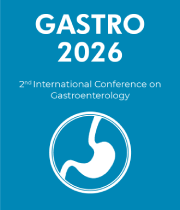Title : Incidence trend of colorectal cancer among screening age group in the United States: An observational study from seer database 2009-2019
Abstract:
Background
Colorectal cancer (CRC) is a major public health concern in the United States. We conducted an observational study to examine the incidence trend of CRC over the past decade, with a focus on age, sex, race, and median household income.
Methods
We used the Surveillance, Epidemiology, and End Results (SEER) database to identify CRC cases among the general population aged 45-74 years from 2009 to 2019. We calculated the average annual percentage change (AAPC) in CRC diagnosis using joinpoint regression, stratified by age, sex, race, and median household income based on the 2000 US standard population.
Results
Our study identified 437,125 cases of CRC among the 45–74 years age group from the SEER database using 21 registries. The overall incidence of CRC decreased over the study period, with an AAPC of -1.0 (-1.2 to -0.8, p-value <0.001). The AAPC was higher among men (-1.4 [-1.8 to -1.0], p-value 0.001) than women (-0.2 [-0.4 to -0.1], p-value 0.016). Black individuals had the highest incidence of CRC, followed by Asians/Pacific Islanders and American Indian/Alaska Natives, while white individuals had the lowest incidence. The AAPC for CRC incidence was highest among black individuals (-1.4 [-1.7 to -1.1], p-value <0.001). The cumulative CRC incidence increased among those with a median household income <$35,000 (AAPC 1.6 [0.9 to 2.4], p-value 0.001) and decreased among those with a median household income >$75,000 (AAPC -1.3 [-1.8 to -0.9], p-value <0.001).
Conclusion
Our study reveals a decreasing trend in CRC incidence among 45–74-year-olds in the United States, with higher rates among men, black individuals, and those with lower median household incomes due to lower utilization of screening services. Men are at higher risk for CRC compared to women due to higher rates of lifestyle factors like smoking, alcohol consumption, and lower physical activities in men, and the protective role of estrogen in women. These findings underscore the importance of targeted screening and prevention efforts to reduce the burden of CRC, particularly among vulnerable populations.
Audience Take Away:
- Incidence trend of colorectal cancer (CRC) in the United States over the past decade, with a focus on age, sex, race, and median household income.
- The differences in CRC incidence rates among different demographic groups, including men, black individuals, and those with lower median household incomes.
- The importance of targeted screening and prevention efforts to reduce the burden of CRC, particularly among vulnerable populations.
The audience will be able to use this information to improve their understanding of CRC incidence trends and risk factors. They can also use this information to develop targeted screening and prevention efforts to reduce the burden of CRC among vulnerable populations.
This research provides valuable insights for other faculty members who are interested in studying the incidence and risk factors of CRC. They can use the methods and findings of this study to expand their research or teaching in this area.
The practical solution provided by this research is the importance of targeted screening and prevention efforts to reduce the burden of CRC among vulnerable populations. This can simplify the job of healthcare providers and policymakers by providing a clear direction for their efforts to reduce the incidence and burden of CRC.
The benefits of this research include an improved understanding of CRC incidence trends and risk factors, the development of targeted screening and prevention efforts, and the reduction of the burden of CRC among vulnerable populations. This research can ultimately contribute to better health outcomes for individuals at risk for CRC.




